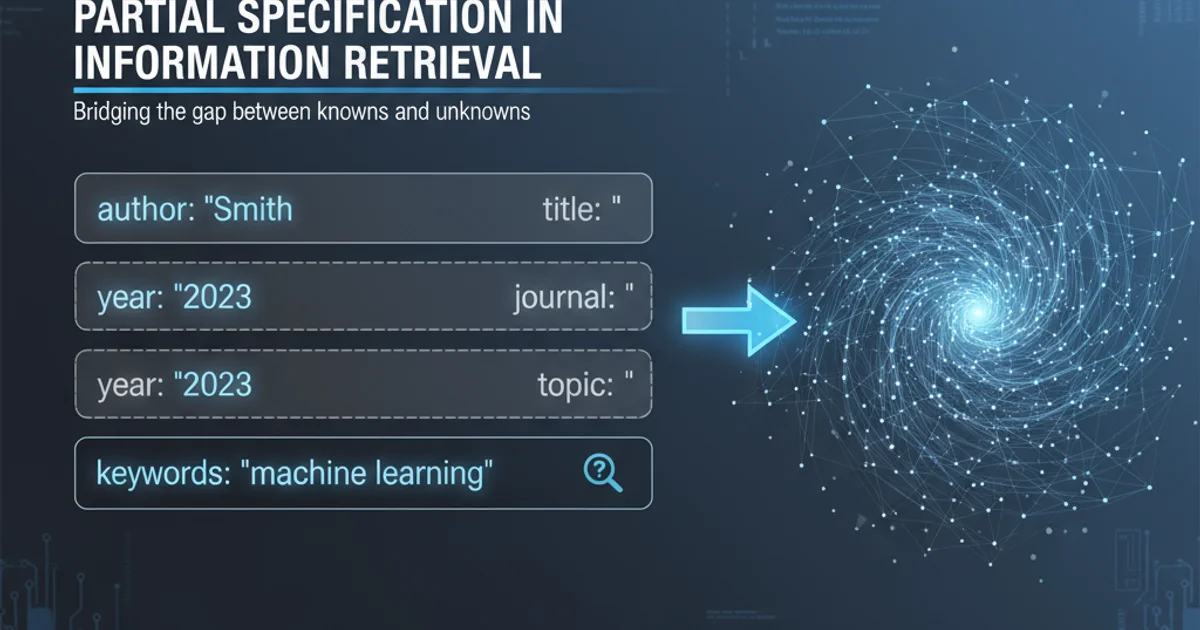Particial specification in Information retrieval
Categories:
Partial Specification in Information Retrieval: Enhancing Search Precision

Explore how partial specification improves information retrieval by allowing users to define incomplete queries, leading to more flexible and relevant search results.
In the realm of Information Retrieval (IR), users often struggle to formulate precise queries that perfectly match their information needs. Traditional search systems typically require complete and exact specifications, which can be restrictive. Partial specification offers a more flexible approach, allowing users to define queries with incomplete or underspecified criteria. This article delves into the concept of partial specification, its benefits, implementation challenges, and how it enhances the user experience in various IR contexts.
Understanding Partial Specification
Partial specification refers to the ability of an IR system to process queries where not all attributes or fields are fully defined. Instead of requiring a user to specify every detail, the system can infer or suggest completions, or retrieve documents that match the available criteria while leaving other aspects open. This is particularly useful when users have a vague idea of what they are looking for, or when they want to explore a broader range of results based on a few key constraints.
flowchart TD
A[User Initiates Search] --> B{Is Query Fully Specified?}
B -- No --> C[Partial Specification Applied]
C --> D{System Infers/Suggests Completions}
D --> E[Retrieve Relevant Documents]
B -- Yes --> F[Exact Match Retrieval]
F --> E
E --> G[Present Results to User]Flowchart illustrating the process of partial specification in an IR system.
Consider a scenario where a user is searching for a book. They might remember the author's last name and a keyword from the title, but not the exact title or publication year. A system supporting partial specification would still be able to return relevant books by that author containing the keyword, rather than demanding the full title. This flexibility significantly reduces the cognitive load on the user and increases the likelihood of finding desired information.
Benefits and Challenges
The primary benefit of partial specification is enhanced user experience through increased flexibility and reduced query formulation effort. It supports exploratory search, allowing users to gradually refine their queries. However, implementing partial specification introduces several challenges. The system must effectively handle ambiguity, rank results based on varying degrees of completeness, and potentially deal with a larger result set due to broader matching criteria.
Implementation Approaches
Implementing partial specification often involves techniques like faceted search, query expansion, and probabilistic retrieval models. Faceted search allows users to filter results by selecting values for specific attributes, effectively building a partial query. Query expansion can automatically add related terms to an underspecified query. Probabilistic models can assign relevance scores based on the likelihood of a document matching a partially specified query.
{
"query": {
"author": "Smith",
"title_keyword": "data",
"publication_year": null
}
}
Example of a partially specified query in JSON format, where 'publication_year' is left null.
Another approach involves using machine learning to learn common query patterns and suggest completions or relevant attributes. For instance, if a user frequently searches for 'sci-fi movies', the system might learn to suggest 'genre: science fiction' even if not explicitly stated in a partial query.
graph TD
A[User Query] --> B{Parse Query}
B --> C{Identify Specified Attributes}
B --> D{Identify Unspecified Attributes}
C --> E[Match Documents on Specified]
D --> F[Suggest/Infer Unspecified]
E & F --> G[Rank Results]
G --> H[Display Results]Graph illustrating the conceptual flow of processing a partially specified query.